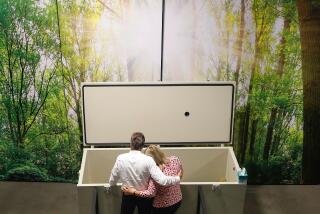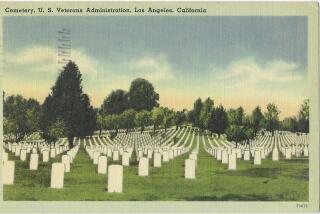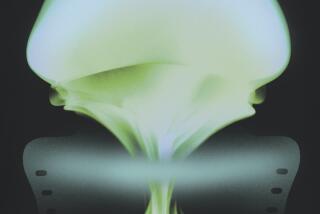Hiroshima: A Mound Designed for Memory
NEW YORK — While the arms talks in Geneva continue, the people of Japan commemorate the August anniversary of the original nuclear terror. Now, with the world on hair-trigger alert, it is important not to lose sight of what one nuclear bomb--fired accidentally or in anger--can do.
In the northwest corner of Hiroshima’s Peace Park, amid a quiet grove of trees, the earth swells. It is not much of a mound. One can walk around it in a minute. Visitors searching for the Peace Bell, directly ahead, or the Children’s Monument, down the path to the right, often ignore it. It is only about eight feet high and 50 feet across. The covering grass is often parched in summer. Unlike most mounds, this one is hollow; within it rests perhaps the greatest concentration of human residue in the world.
The Memorial Mound is a spooky place. Tourists do not dawdle here. No one steps over the low fence surrounding the mound to get a closer look. It is not a spot to visit after dark. Its beauty is of the eerie kind: a lump of earth (not quite lush), a small stone monument on top, a gray wooden fence. Clouds of incense. Cicadas in the trees overhead, screeching.
Behind one corner of the mound the wooden fence has a gate, and down five steps is a door. Visitors are normally not allowed through the gate or the door but occasionally the city of Hiroshima honors a request from a foreign journalist.
Inside, a small altar bearing the statue of the goddess Kannon greets the visitor. The ceiling is low, the light fluorescent. One has to stoop to stand. To right and left, the walls are lined with pine shelving. Stacked neatly on the shelves, like soup cans in a supermarket, are small white canisters with Japanese writing on the front--each with different lettering. There are more than 1,100 cans in all, explains Masami Ohara, a city official. Each contains the ashes of the individual named on the canister.
Behind the curtains on either side of the altar, space is especially tight. Stacked rather unceremoniously, floor-to-ceiling, are several dozen plain, pine boxes, the size of caskets. They are said to contain the ashes of 70,000 unidentified victims of the atomic bombing. If, in an instant, all the residents of, say, Santa Barbara were reduced to ashes, and those ashes were carried away to one repository, this mound could contain the remains.
Most of those who died in Hiroshima on August 6, 1945, were cremated as quickly as possible, partly to prevent an epidemic of disease, partly in keeping with Japanese custom. (Some victims were efficiently turned to ash by the atomic bomb itself, death and cremation occuring in the same instant.) Some were cremated on makeshift altars at a temple that once stood near the present site of the mound, one-half mile from the hypocenter of the blast. The ashes of many others, cremated elsewhere in the city, were carted or hand-carried to a temporary storage site at the temple. The cremations were done by rescue workers who did not know the identity of the bodies they were burning.
Starting in 1946, the surviving citizens of Hiroshima contributed funds to build a temporary vault at the site. In 1955, the Memorial Mound was completed. For several years the collection in the mound grew because remains of victims were still being found. But for two decades now, the city of ashes under the mound has maintained a stable population.
Of the tens of thousands of remains in the mound, only the ashes in the white cans have been identified. The cans have resided here for 41 years, unclaimed by family members or friends. (In many cases, all relatives and friends were also killed by the bomb.) Every year local newspapers publish the list of 1,100 names written on the cans and every year some canisters are finally claimed for transfer to family burial sites. But so many years have passed; most of the cans will stay forever.
They are a chilling site. The cans are bright white, like the flash in the sky over Hiroshima at 8:15 a.m. on that long ago August 6, 1945. From all corners of the city the ashes were collected--babies, parents, soldiers. Unclaimed but named, they have the dignity of a private urn, a life recognized before death.
The pine crates are much less precise, marked with the names of the sites where the human dust and bits of bone were found--a factory or school, perhaps, or a neighborhood crematory. Beyond that, the ashes are anonymous. “They are all mixed together,” says city official Ohara, “and will never be identified.” The world outside may grieve for these victims but there is no dignity here. Under a mound, behind two curtains, inside pine boxes: This is what became of one-quarter of the city of Hiroshima four decades ago.
More to Read
Sign up for The Wild
We’ll help you find the best places to hike, bike and run, as well as the perfect silent spots for meditation and yoga.
You may occasionally receive promotional content from the Los Angeles Times.






